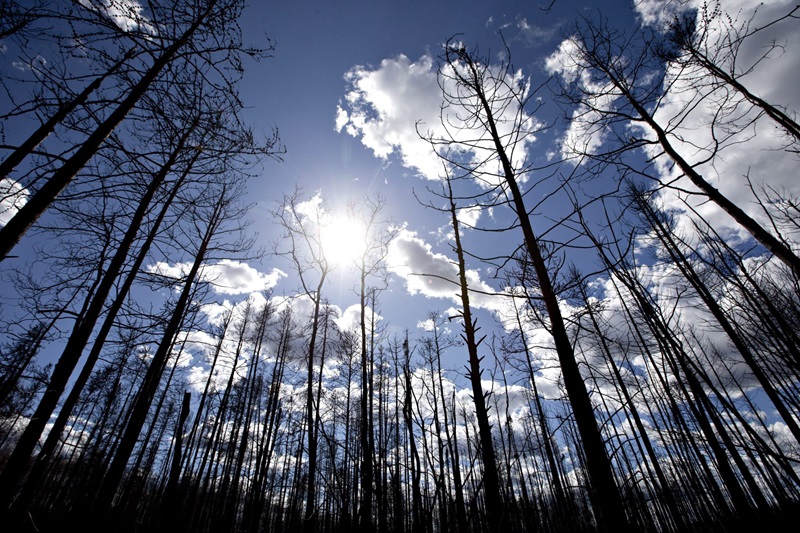Is Fort McMurray still insurable?

Editor’s note: An earlier version of this article incorrectly stated that the 2016 Fort McMurray wildfire cost nearly $6 billion in insured damage, citing 2016 loss totals for that year from Insurance Bureau of Canada. However, the $6 billion total was for the entire year of 2016; the Fort McMurray wildfire itself cost about $4 billion. Canadian Underwriter apologizes for the error.
A wildfire burning near the site of Canada’s costliest natural disaster in Fort McMurray, Alta. eight years ago has brought the issue of the region’s insurability back into the spotlight.
The 2016 Fort Mac wildfire remains Canada’s costliest NatCat at about $4 billion in insured damage.
By comparison, the much smaller wildfire near the hamlet of Saprae Creek Estates — a bedroom community to Fort McMurray — initially prompted evacuation alerts, but those were cancelled Apr. 22, when the fire was held.
This latest wildfire wasn’t classified as large, as it didn’t grow past 200 hectares in size, says Glenn McGillivray, managing director of the Institute for Catastrophic Loss Reduction. Still, 87 homes were lost in Saprae Creek in 2016 and the City of Fort McMurray’s 88,000 residents were evacuated.
These two wildfires combined with major flooding in 2020 begs the question: Is Fort McMurray insurable?
“Is coverage available? The short answer is yes,” Rob de Pruis, IBC’s national director of consumer and industry relations, tells Canadian Underwriter. “Remember that a standard home or tenant insurance policy covers fire, whether that’s a kitchen fire or a wildfire. Fire is fire.
“And in this community, there is absolutely availability from dozens of different providers for both home and auto, and tenant insurance policies.”
After 2016, de Pruis says he heard from a few insurance companies that were starting to target and expand some of their policy accounts into Fort McMurray. He doesn’t know exact details on where that stands now, “but there’s definitely availability of coverage.”
On the flip side, McGillivray tells CU he has heard of at least one major Canadian insurer who has presumably been using a fire model to determine where they may curtail new business and perhaps even non-renew some existing clients. “I have not heard of any place in particular that is the focus of these changes and there is no widespread suggestion from the industry that this, or any other specific area in Canada, is uninsurable for wildfire.”
Provisions in place
That said, a lot of factors are putting pressure on premiums. “To combat that, we do have inflation provisions that are in policies; we have specific endorsements like guaranteed replacement cost endorsements to account for some of those things, which are fairly common,” de Pruis says. “And we see these quite a bit in communities across Canada.”
For example, some insurers now offer upgrade or resilient endorsements that cover the cost of improvement or upgrades to a home, such as fire-resistant materials on the exterior or impact-resistant roofing and siding material.
But given Fort Mac is such a NatCat hotspot, why would anybody live there or insure the area? “Living and working near wildfire hazard areas is, in many respects, part of the fabric of living in Canada,” McGillivray says.
While there are ways to keep people from living or building in floodplains, wildfire risk is transient and not as clear-cut as flood, he says. “Because it would not be realistic to move people out of harm’s way, we have to concentrate more on making our at-risk communities less flammable. We know how to do this.”
De Pruis notes the Regional Municipality of Wood Buffalo (which includes Fort McMurray and Saprae Creek) focuses on wildfire mitigation and shares information in newsletters with the community. “They’ve done over 600 individual Fire Smart home assessments in the community just to let people know about what’s going on…”
Insurers and their representatives, like brokers, also have information on their websites. “They’re sharing information and including information in renewal documents about preparedness and what [clients] can do,” de Pruis says. “We’re hearing about these community assessments that can be done as well.”
The message seems to be resonating. “In Alberta and B.C., we’re getting some traction with provincial governments,” de Pruis says. “They’ve announced additional resources and training and funding for wildfire mitigation and also for the response — the actual firefighters themselves.
“So, this is good news, and they’re taking this seriously…”
Feature image: Burnt trees seen in Saprae Creek near Fort McMurray Alta, on Friday June 3, 2016. Members of the community are now being allowed back into their homes. THE CANADIAN PRESS/Jason Franson







